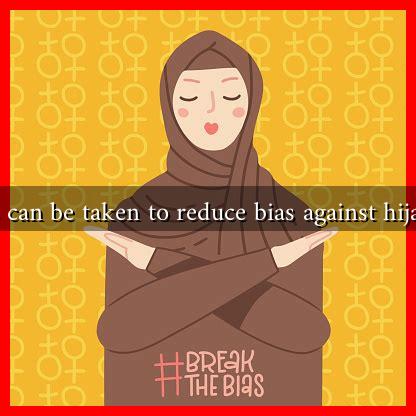-
Table of Contents
What Steps Can Be Taken to Reduce Bias Against Hijab Wearers?
The hijab, a traditional headscarf worn by many Muslim women, has often been a subject of controversy and bias in various societies. This bias can manifest in different forms, including discrimination in the workplace, social exclusion, and negative stereotypes. To foster a more inclusive environment, it is essential to take proactive steps to reduce bias against hijab wearers. This article explores effective strategies that can be implemented at individual, community, and institutional levels.
Understanding the Roots of Bias
Before addressing the issue, it is crucial to understand the underlying causes of bias against hijab wearers. Some of the primary factors include:
- Lack of Awareness: Many people are unfamiliar with the cultural and religious significance of the hijab.
- Stereotypes and Misconceptions: Media portrayals often reinforce negative stereotypes about Muslim women.
- Fear and Misinformation: Post-9/11 sentiments have led to increased fear and misunderstanding of Islamic practices.
Educational Initiatives
Education plays a pivotal role in combating bias. By promoting understanding and awareness, we can dismantle stereotypes and foster acceptance. Here are some educational initiatives that can be implemented:
- Workshops and Seminars: Organizing events that educate people about the hijab and its significance can help dispel myths.
- School Curricula: Integrating lessons on cultural diversity and religious practices into school curricula can promote understanding from a young age.
- Community Outreach Programs: Engaging with local communities through open dialogues can create a platform for sharing experiences and fostering empathy.
Media Representation
The media plays a significant role in shaping public perception. To reduce bias against hijab wearers, it is essential to advocate for fair and accurate representation in media. Strategies include:
- Promoting Positive Stories: Highlighting the achievements and contributions of hijab-wearing women in various fields can counter negative stereotypes.
- Encouraging Diverse Voices: Media outlets should include hijab-wearing women in discussions and portray them as multifaceted individuals.
- Fact-Checking and Accountability: Holding media organizations accountable for biased reporting can help ensure more balanced coverage.
Workplace Policies and Practices
Workplaces are often microcosms of society, and bias can significantly impact the professional lives of hijab wearers. To create a more inclusive work environment, organizations can implement the following practices:
- Diversity Training: Providing training on cultural competence can help employees understand and respect different practices.
- Inclusive Dress Codes: Companies should adopt dress codes that respect religious attire, ensuring that hijab wearers feel comfortable and accepted.
- Support Networks: Establishing support groups for hijab-wearing employees can provide a safe space for sharing experiences and challenges.
Community Support and Advocacy
Community support is vital in combating bias. Here are some ways communities can come together to support hijab wearers:
- Allies and Advocacy Groups: Non-Muslims can act as allies by standing up against discrimination and advocating for the rights of hijab wearers.
- Interfaith Dialogues: Encouraging conversations between different religious groups can foster understanding and reduce prejudice.
- Public Campaigns: Launching campaigns that promote acceptance and celebrate diversity can help shift public perception.
Conclusion
Reducing bias against hijab wearers requires a multifaceted approach that involves education, media representation, workplace inclusivity, and community support. By implementing these strategies, we can create a more accepting society that values diversity and respects individual choices. As we work towards this goal, it is essential to remember that every small step counts in the fight against bias and discrimination. Together, we can build a world where everyone, regardless of their attire, is treated with dignity and respect.
For further reading on the importance of diversity and inclusion, you can visit The Universal Declaration of Human Rights.

